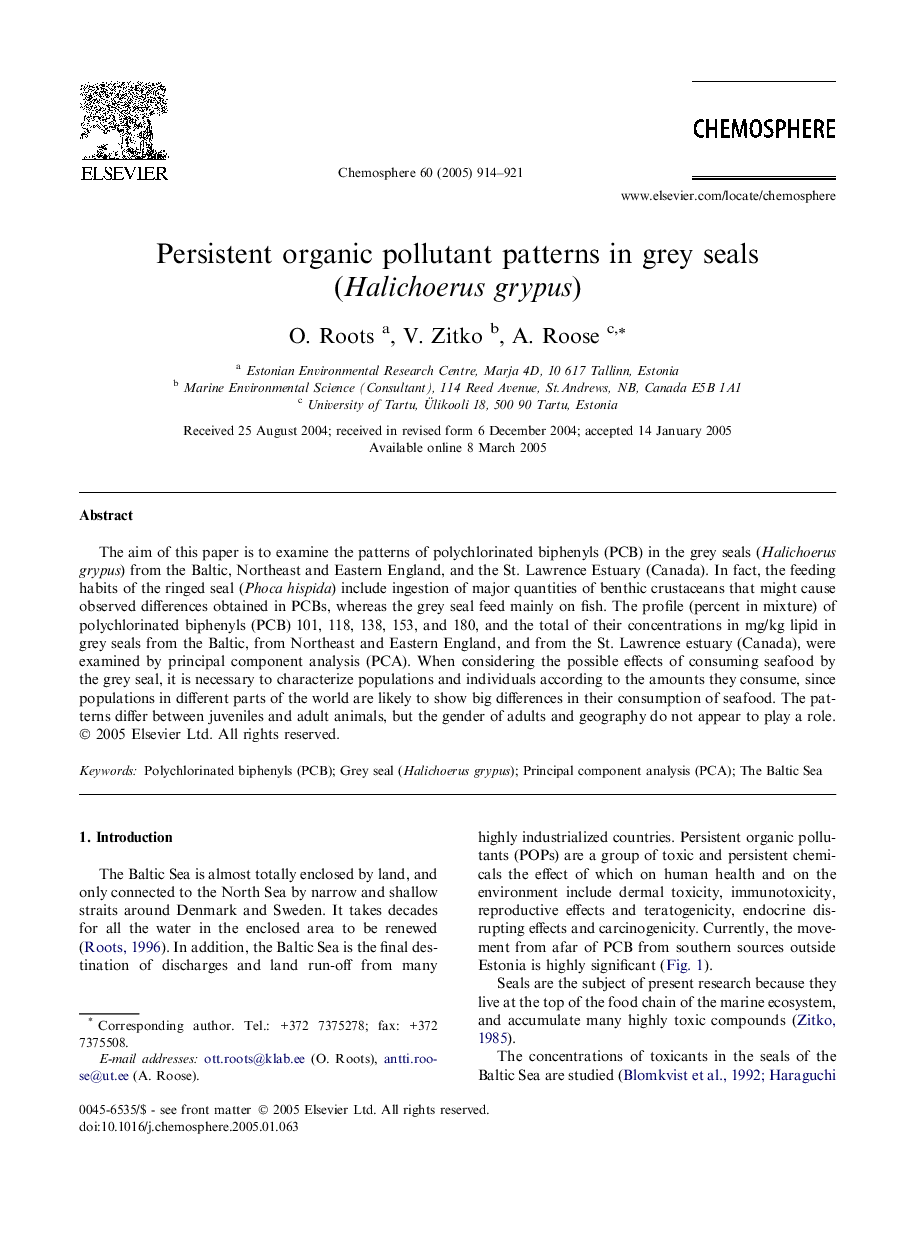| Article ID | Journal | Published Year | Pages | File Type |
|---|---|---|---|---|
| 9451255 | Chemosphere | 2005 | 8 Pages |
Abstract
The aim of this paper is to examine the patterns of polychlorinated biphenyls (PCB) in the grey seals (Halichoerus grypus) from the Baltic, Northeast and Eastern England, and the St. Lawrence Estuary (Canada). In fact, the feeding habits of the ringed seal (Phoca hispida) include ingestion of major quantities of benthic crustaceans that might cause observed differences obtained in PCBs, whereas the grey seal feed mainly on fish. The profile (percent in mixture) of polychlorinated biphenyls (PCB) 101, 118, 138, 153, and 180, and the total of their concentrations in mg/kg lipid in grey seals from the Baltic, from Northeast and Eastern England, and from the St. Lawrence estuary (Canada), were examined by principal component analysis (PCA). When considering the possible effects of consuming seafood by the grey seal, it is necessary to characterize populations and individuals according to the amounts they consume, since populations in different parts of the world are likely to show big differences in their consumption of seafood. The patterns differ between juveniles and adult animals, but the gender of adults and geography do not appear to play a role.
Related Topics
Life Sciences
Environmental Science
Environmental Chemistry
Authors
O. Roots, V. Zitko, A. Roose,
